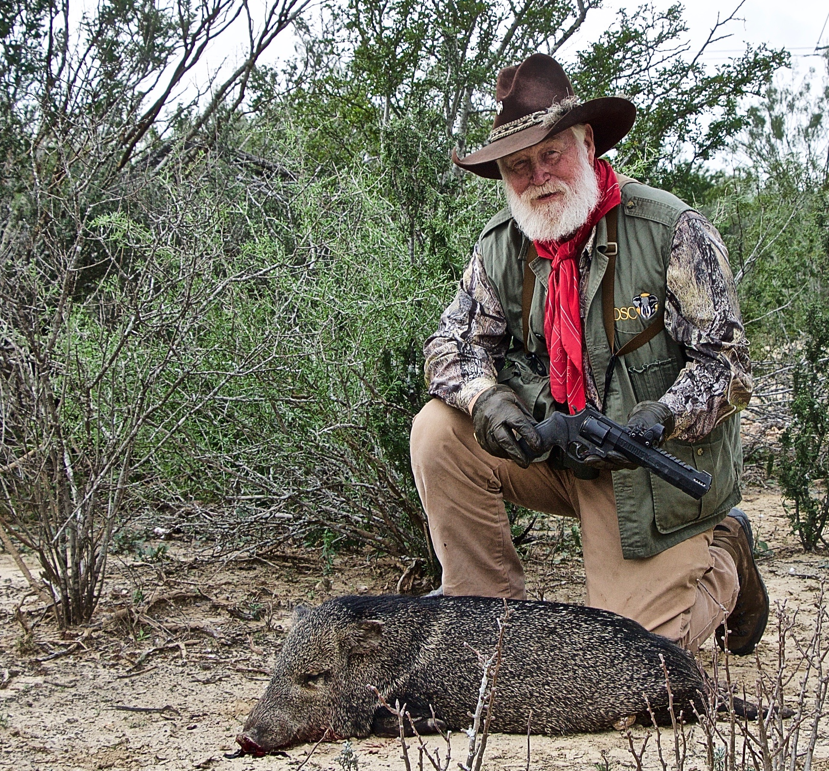What is a trophy? Ask 10 hunters and you may get 10 different answers. To a newbie, a small whitetail is a trophy that will always hold a distinctive place in the hunter’s memory. Another hunter might give trophy status to any mature animal that symbolizes unforgettable adventure in an unforgiving place, or with a special companion. To a veteran safari hunter, a trophy may be nothing less than a full-mane, seven-year-old lion.
DSC understands, though, that critics most commonly use the term “trophy hunting” to mean an animal that is hunted gratuitously. “For sport,” as they say. It’s this definition – so misinformed, emotional and dramatized – that we’ll attempt to address in the following myths and facts.
Myth: Hunting is no longer necessary in a modern world.
Fact: Humans have always been hunters. Our bodies evolved to chew, digest and metabolize meat. Hunting is in our DNA. True, people today are less connected to their paleo origins. Many have learned to suppress their hunting instincts, instead paying others to kill animals for them, and simply buying meat at a supermarket. But hunters have a more personal connection to their food. Following this instinct costs money in the form of hunting licenses, equipment taxes and more. That revenue funds most conservation programs, both historically and currently.
Myth: Only a handful of people hunt anymore. And they’re mostly rednecks.
Fact: Some 22 million people in the U.S. are hunters – and their numbers are growing! More women are hunting today, too. Why? In a society seeking greener, healthier lifestyles, hunting offers a truly organic, free-range, sustainable source of meat. Hunting and experiencing the world’s great wildernesses also is the reason why some 700,000 people a year seek adventure travel beyond American borders.
Myth: Hunters have an unfair advantage over the animals they hunt.
Fact: Hunters are constantly evaluating “fair chase” aspects of hunting. In some cases, laws and regulations dictate appropriate equipment and techniques. In others, such decisions come down to a hunter’s personal ethics. While hunting can certainly pit man against elements such as harsh weather and rough terrain, it’s a bit sophomoric to think of hunting as competition between human and animal. More maturely, hunting is the sustainable use of game species. Trophy hunting, where the hunter pursues only a select individual, is a premier form of sustainable use.
Myth: Hunting is cruel, inhumane and the murder of innocent animals.
Fact: Such comments imply that hunters have malicious intent against animals, which just isn’t true. Hunters do not intend to cause suffering. They make every effort for a clean, quick kill. Unlike livestock raised for beef, pork or veal production, game animals live and die unfettered in the wild – thanks to conservation programs, which are funded mostly by hunters.
Myth: Trophy hunting is not about food. It’s simply killing animals for the thrill of it.
Fact: No wildlife enthusiast will deny the thrill of seeing exceptionally large or unusual specimens. But a hunter actually collecting one is quite rare. A selective hunter will end most of their hunts without a kill, because the individual animal they’re seeking is difficult to find within a population, and within a wild landscape. When a hunter finally does take a trophy-class animal, there is an unequivocal sense of accomplishment, luck and reward. However, trophy animals are utilized no differently than their smaller, more typical counterparts. Meat will be eaten, skins and antlers (or horns) preserved, and in some cases even internal organs and bones are used. Thus, to a hunter, the term “trophy hunting” describes the intent, not the utility, of a hunt.
Myth: Trophy hunting is all about putting animal heads on a wall.
Fact: For hunters, taxidermy and photos and artifacts collected from their hunts represent deeply personal memories. They symbolize respect and admiration for wildlife, and the places where it lives, in a way that non-hunters will never understand.
Myth: Trophy hunters select the biggest and strongest animals – exactly opposite of how natural selection works in the wild, where predators take only smaller, weaker individuals.
Fact: That’s an oversimplified snapshot. In nature, predators are opportunists. Sometimes they prey on the young or sick, but they’ll also take an animal in its prime if an opportunity presents itself. A trophy hunter is selective to the extreme, seeking only the specimen with the biggest antlers or horns. That individual animal is often old, past its prime, non-breeding, sometimes in poor body condition, perhaps even a loner no longer contributing to a herd. Biologists call these “surplus animals,” because removing them does no harm, and may actually enhance, herd productivity. In the U.S., state wildlife agencies monitor the health of game populations and issue hunting licenses, permit and quotas based on science, not politics or public opinion.
Myth: Trophy hunting is an extravagant pursuit of the rich.
Fact: Today, hunting of any kind is not cheap. In addition to economic boons, particularly in rural areas, hunting gives measurable value to wildlife. In Africa, for example, some species are tolerated on private land only because hunters are willing to pay to hunt. Without sustainable-use hunting, wildlife would be eliminated to reduce depredation on cattle and crops. An elephant hunter may spend $50,000 for a chance to take a trophy bull – an animal that might otherwise be killed by villagers protecting their cornfield. Dollars make the difference between a region with little wildlife, versus a region with good habitat, diverse species and effective law enforcement.
Myth: Trophy hunters kill endangered species.
Fact: “Endangered” is an official status determined by scientists. Species listed as endangered under the Endangered Species Act are not hunted except in extraordinary circumstances as prescribed by biologists. An example was the controversial black rhino hunt auctioned by DSC in 2014. DSC’s official comment letter about that hunt is posted here. The public often assumes many hunted species like elephants, wolves, lions and bison are endangered, but that’s just not true.
Myth: The rhino hunt is unnecessary. Why not relocate the animal or send it to a zoo?
Fact: The rhino to be hunted is old and aggressive, not the kind of animal that is easily or safely relocated, or even desired by zoos. And, very importantly, especially in developing countries, wildlife relocation costs money whereas hunting generates money for conservation.
Myth: In Third World countries, money from hunting doesn’t go into conservation. It lines the pockets of corrupt politicians.
Fact: Corruption in poor nations is a problem that cannot be denied. But it’s important to understand there also are systems in place to provide oversight. CITES and IUCN are two watchdog, science-based, international organizations that monitor wildlife, sustainable use and conservation activities worldwide. The U.S. Fish and Wildlife Service also is heavily involved, particularly with threatened and endangered species.
Myth: Hunting should be outlawed everywhere.
Fact: This is shortsighted thinking. Hunting is a wildlife management tool with many regulations in place that consider hunter, wildlife and public need. Funds generated by hunting are used for conservation efforts that benefit all wildlife – including species that aren’t hunted. Consider just the implications of outlawing deer hunting in the U.S., with rising depredation on crops and even suburban flowerbeds, spread of tick-borne diseases, car-deer collisions on highways, etc.
Myth: Trophy hunting is merely men showing off their masculinity, or compensating for their lack of it.
Fact: Hunters enjoy spoofing animal-rights and anti-hunting activists, too.
About Dallas Safari Club (DSC)
Desert bighorns on an unbroken landscape, stalking Cape buffalo in heavy brush, students discovering conservation. DSC works to guarantee a future for all these and much more. An independent nonprofit organization since 1982, DSC has become an international leader in conserving wildlife and wilderness lands, educating youth and the general public, and promoting and protecting the rights and interests of hunters worldwide. Get involved at www.biggame.org.



